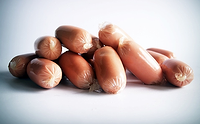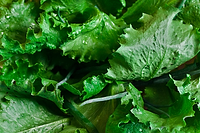The European Food Safety Authority (EFSA) and the European Centre for Disease Prevention and Control (ECDC) today released an update on an ongoing outbreak of hepatitis A that began over a year ago. More than 1,300 hepatitis A cases have been reported in 11 Member States since January 2013, with 240 confirmed cases related to the ongoing outbreak.
The full report (PDF) may be downloaded here. A summary of the report follows:
Initially the outbreak was associated with people who had travelled to Italy. However seven Member States — France, Germany, Ireland, Norway, the Netherlands, Sweden and the United Kingdom — have reported cases of infections in people who had not travelled to Italy.
Preliminary investigations identified frozen berries as the most likely source of infection. Other hypotheses, such as cross contamination in the food production environment or that the outbreak strain is already widespread but previously undetected, have now also been taken into account.
EFSA is leading a trace-back investigation, with the support of affected Member States, the ECDC, the European Commission and the Federal Institute for risk assessment (Bfr).
Since 1 January 2013, 1315 cases of hepatitis A virus (HAV) infection have been reported by 11 Member States as potentially linked to the ongoing HAV outbreak. Of these, 240 were confirmed outbreak cases, sharing the same sequence KF182323 at the junction VP1-2a of the viral genome. When first declared, the outbreak was associated with travel to Italy. In addition to Italy, seven other Member States have now reported cases with no travel history: France, Germany, Ireland, Norway, the Netherlands, Sweden and the UK.
Epidemiological, microbiological and environmental investigations indicate frozen berries as the vehicle of infection for this outbreak and suggest that it could be a single outbreak, linked to a common, continuous source in the EU/EEA. However other hypotheses cannot be excluded, such as cross contamination in a food production environment or an outbreak strain that is already widespread but has, to date, gone undetected.
Due to the characteristics of the pathogen (i.e. low infectivity dose and long incubation period) and of the food vehicle (i.e. long shelf-life and complex processing and distribution chain), it is expected that more cases will be reported and other Member States may become involved. In accordance with their national guidelines, Member States may consider active or passive immunization of those in close contact with cases in order to prevent secondary transmission.
Despite coordinated efforts from EFSA, ECDC, affected Member States and the European Commission (HAV-Trace Working Group), the ongoing trace-back investigation has not yet identified a likely source of contamination. The Working Group will continue the trace-back exercise and extend participation, on voluntary basis, to countries that have recently become involved, namely France, Norway and Sweden. All relevant information on national trace-back investigations shall be gathered and integrated into the HAV-Trace exercise via the RASFF (Rapid Alert System for Food and Feed) platform.
Given the epidemiological and laboratory evidence of contaminated frozen berries, the risk to human health, and ongoing transmission with increasing geographical spread, affected Member States could consider implementing mitigating measures at national level. In particular, Member States could consider promoting risk communication, recommending heat treatment of frozen berries before consumption and encouraging HAV vaccination of those in contact with cases and throughout the larger community.
Implementation of an enhanced sampling scheme for frozen berries at the processing and distribution level could also be considered.
Enhanced epidemiological and microbiological surveillance for HAV in the EU/EEA should also be encouraged. A whole genome sequencing approach needs to be considered to examine viral isolates from different points in time during the outbreak in order to confirm the hypothesis of a single outbreak.
ECDC, EFSA and the European Commission, in cooperation with the affected Member States, will continue to their efforts to identify the vehicle and source of infection and closely monitor this event. The risk assessment will be updated as soon as any new relevant information becomes available.



